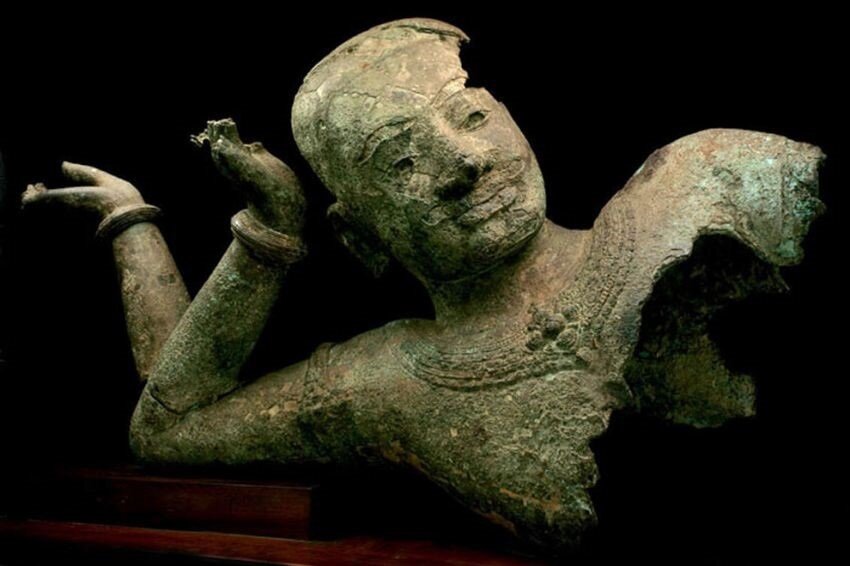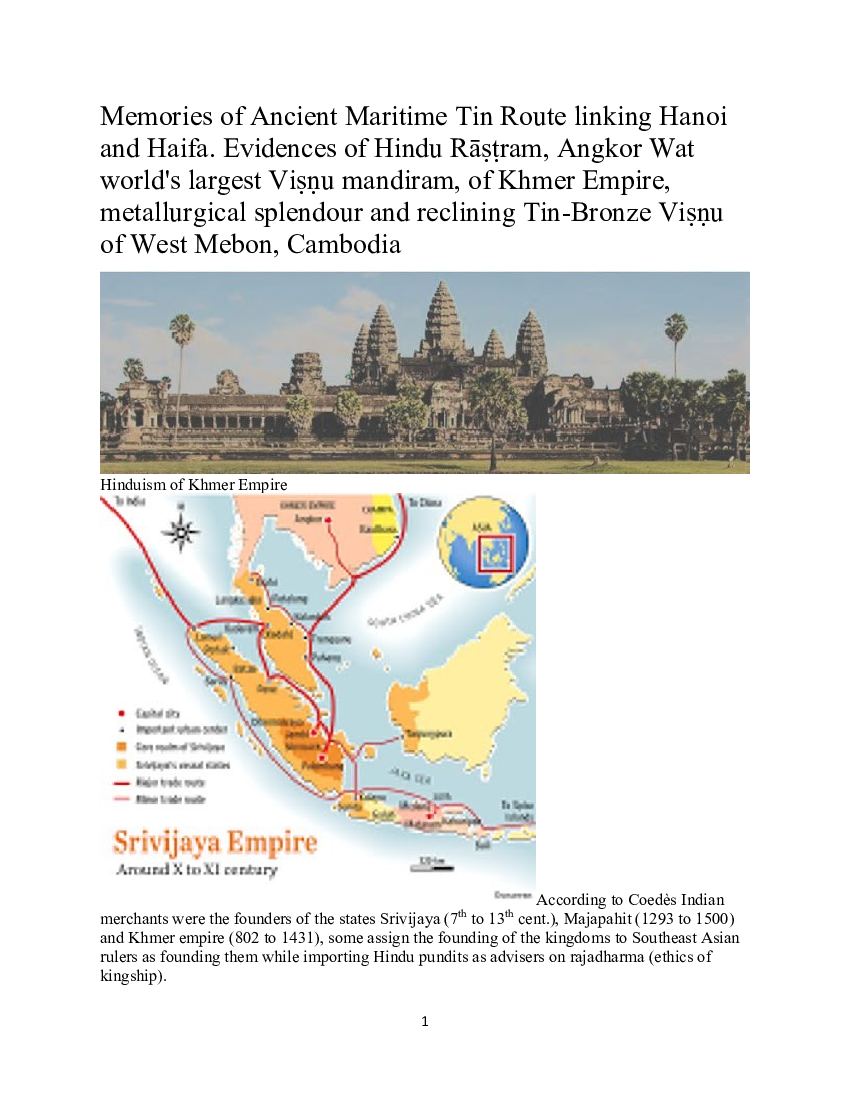This quite capricious compendium of documents and insights about Indianization and the Khmer Empire is an interesting summary of the modern Indian outlook on the subject.
First, the author debukes three traditional theories on the Indianization of Southeast Asia, summarized as follows:
‘1. The Theory of the Brahmins (priests), which credits the Brahmins with the transmission of Indian culture. The Brahmins are individuals belonging to the Hindu priest, artists, teachers, technicians class. This theory was debunked due to the belief that the Brahmins are very elitist as they are at the top of the Indian caste system, where the society is divided into four major castes (varna): the priestly Brahmins, the Kshatriya warriors, the merchant Vaishyas, and the lowly, labouring Shudras. However, Southeast Asia did not adopt this system.
‘2. The Theory of the Kshatriyas, presupposing that Indian cultural expansion was due to the seminal influence of the Indian warriors and conquerors, who migrated to Southeast Asia and conquered the land through war. However, insufficient evidence could be provided to support the hypothesis.
‘3. The Theory of the Vaisyas, which postulates that Indian cultural penetration began with traders, who intermarried local women and impressed the indigenous population with their goods and culture. Trade had been the driving force for the traders to move to different places and hence spread the Indian culture around. However, the merchants of low origin and caste would not have the extensive knowledge to pass on extremely complex expertise as well as have the legitimacy to install the rulers of empires in Southeast Asia.’
The author then states that ‘rather than being the result of a single factor, most likely the whole process of Indian cultural expansion was the outcome of endeavors of warriors, traders and priests along with the indigenous initiative. Most probably all four groups of people were involved in the process.’
He also stresses: ‘The Indianisation process was not through colonisation, but rather through cultural diffusion (syncretism), cultural borrowing and adaptation. The arrival of a large number of Indians would have made significant social changes, but the people of Southeast Asia did not adopt the caste system, nor even the dietary habits of the Indians like curry powder or milk products. Politically, none of the supposed Southeast Asia ‘colonies’ showed any allegiance to India.’



